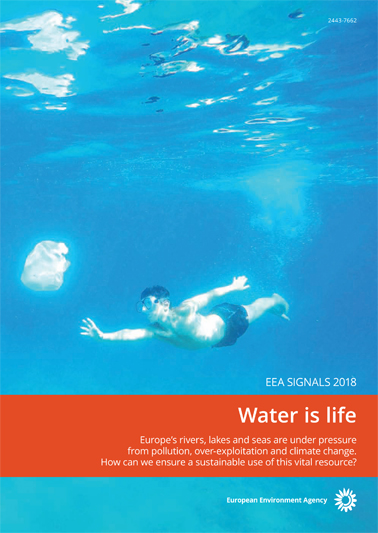Europe's freshwater and marine resources may seem limitless but they are under increasing pressure from pollution, over-exploitation and climate change. The European Environment Agency's (EEA) Signals 2018 explores the state and trends of Europe’s waters, asking how we can ensure healthy rivers, lakes, groundwater resources and seas for future generations. (https://www.eea.europa.eu/publications/eea-signals-2018-water-is-life)
The new 'EEA Signals 2018 – Water is life' gathers latest assessments and data to explore what is the state and future of Europe's waters. The report argues that, to ensure clean and healthy lakes, rivers and seas, we need to fundamentally change the way we use and treat water. To support this change, the European Union has put in place a number of policies to improve water quality and reduce pressures on Europe's water bodies.
Currently, economic activities in Europe use on average around 243 000 cubic hectometres of water annually. Most of this water returns directly to the environment but often with impurities or pollutants, including hazardous chemicals. At the same time, the state of Europe's seas is dire, mainly due to overfishing and climate change. Rivers, lakes and wetlands suffer from excess nutrients and altered habitats. Chemical pollution negatively affects both freshwater and marine environments.
Signals 2018 looks at water as a part of Europe's economy as well as a home and a vital resource for animals and plants. The report also takes a closer look at water in cities, the plastic waste problem, and the impacts of climate change. Two interviews show ways of dealing with the risks of too much water, in the Netherlands, and too little water, in Malta. The final article presents different polices and models to govern water bodies and their resources across geopolitical borders.
(https://www.eea.europa.eu/publications/eea-signals-2018-water-is-life/at_download/file)

